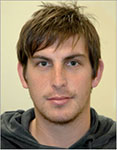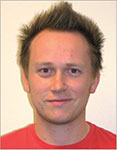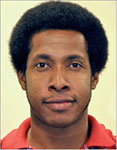Overpressures in the central Otway Basin: the result of rapid Pliocene–Recent sedimentation?
David Tassone A , Simon Holford A , Mark Tingay A , Adrian Tuitt A , Martyn Stoker B and Richard Hillis CA University of Adelaide
B British Geological Survey
C Deep Exploration Technologies Cooperative Research Centre
The APPEA Journal 51(1) 439-458 https://doi.org/10.1071/AJ10028
Published: 2011
Abstract
This paper reports the first evidence for significant overpressures in the Otway Basin, southern Australia, where most previous studies have assumed near-hydrostatic pore pressures. Overpressures are observed in the Upper Cretaceous Shipwreck supersequence in several wells in the Voluta Trough, such as Bridgewater Bay–1, Normanby–1 and Callister–1. One of these wells penetrated successions of Pliocene-Recent marine clastic sediments nearly 700 m thick that were deposited rapidly in submarine channels and that were probably carved during the late-Miocene to early-Pliocene. Wireline and drilling data suggest that overpressures present in Upper Cretaceous shales and sandstones in the Belfast Mudstone and Flaxman and Waarre formations developed either due to disequilibrium compaction—where there is no evidence of hydrocarbon generation and thick Pliocene stratigraphy is present—or due to fluid expansion where there is evidence of hydrocarbon generation and the Pliocene stratigraphy is thin to absent. The two key factors that may indicate abnormal pore pressures in Upper Cretaceous sediments in the central Otway Basin are the thickness of Pliocene stratigraphy and whether or not hydrocarbons are actively generating from source rocks.

David Tassone is a PhD student at the Australian School of Petroleum. He graduated with a BSc (Hons) from The University of Adelaide in 2008. His research interests are in the compaction, thermal uplift and burial history of sedimentary basins and their associated deformation, and tectonic processes and their impact on hydrocarbon exploration. Member: AAPG, ASEG, PESA and EAGE. david.tassone@adelaide.edu.au |

Simon Holford is an ARC Australian Postdoctoral Fellow and lecturer at the Australian School of Petroleum and is Deputy Director of the Centre for Tectonics, Resources and Exploration (TRaX) at the University of Adelaide. He graduated with a BSc (Hons) from Keele University (2001) and a PhD from the University of Birmingham (2006). His research interests are in the deformation, uplift and magmatic evolution of rifted margins, sedimentary basins, and continental interiors and their impact on hydrocarbon exploration. Member: AGU, ASEG, GSA, GSL and PESA. simon.holford@adelaide.edu.au |

Mark Tingay is a senior lecturer at the Australian School of Petroleum where he examines the petroleum geomechanics, overpressures and the tectonic evolution of sedimentary basins in southeast Asia. In particular, he specialises in studying the stresses in sedimentary basins and the mechanics of rock failure and fluid mobilisation in zones of very high pore pressure, including oil field blowouts and natural features, such as mud volcanoes. Mark graduated with a PhD in geophysics from the Australian School of Petroleum in 2003, worked at the World Stress Map Project in Germany from 2003–6, and has been a lecturer in petroleum geology and drilling engineering at the University of Adelaide and Curtin University since 2006. He has published more than 40 peer-reviewed papers, consulted on numerous petroleum geomechanics projects in southeast Asia, taught industry short courses on petroleum geomechanics to four companies and for the American Association of Petroleum Geologists and routinely provides media interviews on geoscience and petroleum industry issues. mark.tingay @adelaide.edu.au |

Adrian Tuitt is a Postdoctoral Fellow at the Australian School of Petroleum at the University of Adelaide. He graduated from University of Edinburgh with a BSc (Hons) geology degree and a PhD in structural geology. His research work involves seismic interpretation and numerical modelling, with particular interest in deformation along continental margins and delta systems. Member: PESA adrian.tuitt@adelaide.edu.au |

Martyn Stoker is a geologist with the Marine Geoscience Programme of the British Geological Survey in Edinburgh, Scotland. He graduated with a BSc (Hons) from Leicester University (1977) and a PhD from the University of Liverpool (1981). His research interests are in the Mesozoic–Cenozoic tectonostratigraphic evolution of the Arctic-NE Atlantic region, the tectonic, sedimentary and oceanographic development of passive margins, and continental margin glaciation. Member: GSL, Edinburgh Geological Society. mss@bgs.ac.uk |

Richard Hillis is CEO of the Deep Exploration Technologies CRC. He graduated with a BSc (Hons) from Imperial College, London (1985), and a PhD from the University of Edinburgh (1989). Until recently, he was the State of South Australia Professor of Petroleum Geology and Head of the Australian School of Petroleum at the University of Adelaide. He has published over 100 papers in the areas of petroleum geomechanics and basin tectonics and has consulted extensively to, and run short courses for, the petroleum industry on these topics. Richard is a non-executive director of JRS Petroleum Research (a privately owned image log and geomechanics consultancy), Petratherm (ASX-listed geothermal company) and AuScope (a national research facility in the earth sciences). Member: AAPG, AGU, ASEG, EAGE, GSA, GSL, PESA, SEG and SPE. richardhillis@detcrc.com.au |


